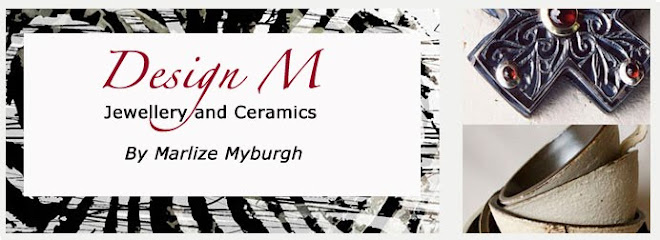After she obtained her Bachelor of Arts (Jewellery Design) degree in 1993 at the University of Stellenbosch, Marlize gained valuable experience by working as a jewelry designer with a jeweller in Somerset-West (South Africa).
During her studies as well as thereafter, Marlize proved that she has a special talent for jewellery by attaining various awards, as listed below.
Marlize lectured at the University of Stellenbosch during 1995 and in 1996 she started to work full-time from her studio at home.
Marlize believes that jewellery is very personal and should fit the wearer’s style, personality as well as budget. Quality craftsmanship and detail is very important to her. Satisfying the client is Marlize’s first priority.
She loves to experiment with different techniques and metals and in doing so, discovers new opportunities all the time. She also likes to play with texture, surfaces of different granularities as well as colours. She likes to think of her jewellery as wearable pieces of art.
Marlize specialises in the design of new jewellery pieces, redesign of old jewellery, the manufacturing and repair of all jewellery as well as stringing of pearls and beads. She also supplies diamonds, precious stones, pearls and gold to her clients.
In 2003, Marlize started creating ceramics under the supervision of Hennie Meyer and had her first combined exhibition of ceramics as well as jewelry that year. She is working on techniques to further explore the combination of the art of jewelry making with ceramics.
Marlize obtained diplomas in ceramics as well as jewellery at Box Hill TAFE.
During June and July 2009, Marlize completed an artist's residency at the Cite Internationale Des Arts in Paris, made possible by the South African Association for the Visual Arts. 2011 Marlize did a month artist residency with the renowned ceramicist Hennie Meyer in South Africa.
Currently Marlize is teaching Ceramics at Manningham Art Centre and Wyreena Art centre as well as working in Ceramics as well as Jewellery at her studio in Donvale, Australia.
 Post Card Design
Post Card Design 






